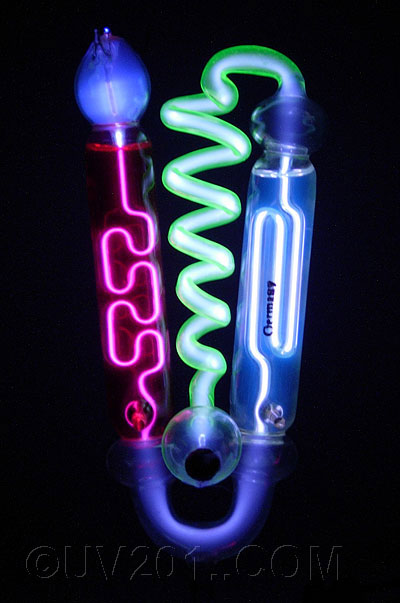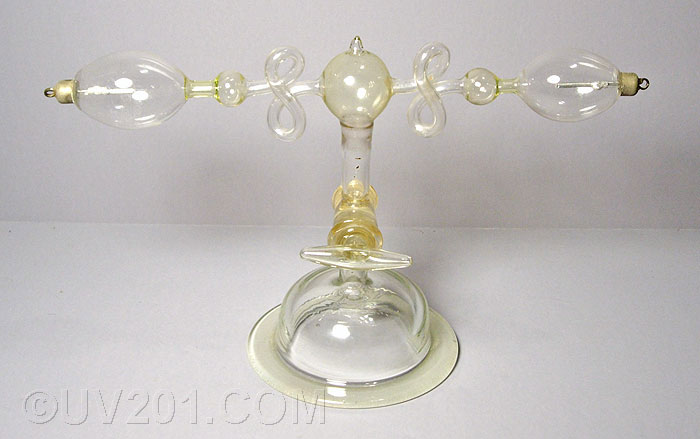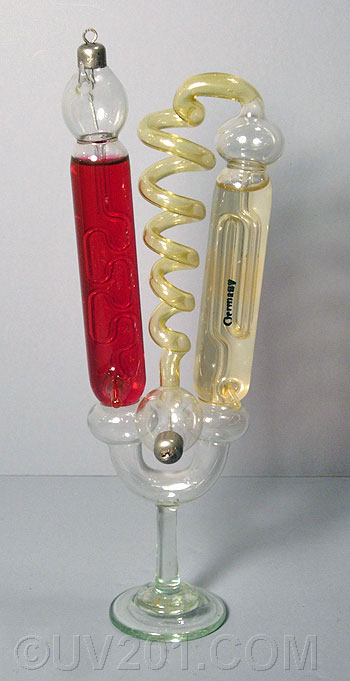|
Geissler Tubes |
|
|
|
The Geissler tube is a decorative electrical novelty that consists of a glass tube that contains a gas such as neon or argon at a low pressure, with electrical terminals at each end of the tube. Upon the application of a high voltage, the gas will glow. Functionally, they are the same as the familiar neon sign tube. These devices were first made by Heinrich Geissler (1814-1879), German scientific instrument maker. The earliest tubes date back to the 1850's, and they have been in production ever since, primarily in Germany. It is virtually impossible to tell when any particular tube was made, however. Geissler tubes are as much an expression of the glassblower's art as they are demonstrators of electrical phenomena. Geissler tubes have been made in a wide variety of shapes and sizes, containing various gases and mixtures of gases. They have been made as small as a few inches, and as long as several feet. Some tubes contain samples of fluorescent minerals or liquids. Some were made with uranium glass (also knows as Vaseline glass), identifiable in normal light by its yellowish tint. When excited by ultraviolet light (generated by argon gas), it glows a bright green color. Fortunately, it contains only trace amounts of uranium, and is not particularly radioactive. The one shown here stands about 8 inches high, though the total tube length is about 18 inches. The center section is a tapered helix of uranium glass. Two chambers contain fluorescent liquids. |
 |
 |
|
This is a classroom demonstration version of the Geissler tube. A valve at the bottom allowed the interior of the tube to be evacuated by a vacuum pump, and then gases of various types (or mixtures of gases) could be allowed into the tube. The valve would then be closed, and a high voltage source applied to the terminals. The characteristic colors emitted by a the gases could then be observed. This tube has three sections that were made from uranium glass. These were added for some additional visual appeal, and also as a means to indicate the presence of ultraviolet emissions from the gas inside. |
